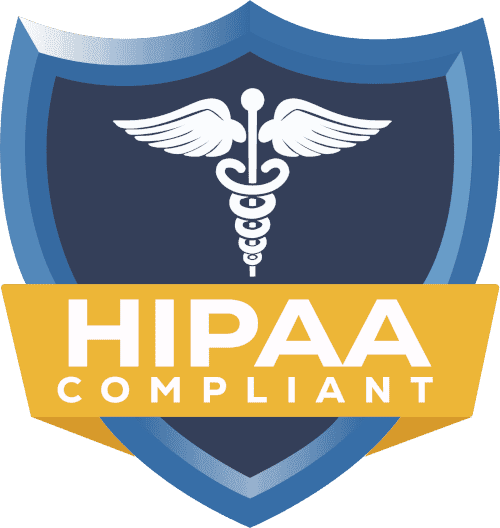The Top 100 Ways to Attract New Patients to Your Medical Practice in 2025

Introduction
Growing your medical practice requires a consistent flow of new patients. While established practices benefit from referrals and word-of-mouth, implementing strategic marketing approaches can significantly boost your patient acquisition. This comprehensive guide explores 100 proven ways to attract new patients to your practice, organized by category for easy implementation.
Establishing a Strong Online Presence
1. Build a Professional, Mobile-Responsive Website
Your website is often a patient’s first impression of your practice. Ensure it’s professional, informative, and optimized for mobile devices since most searches now happen on smartphones.
2. Implement Search Engine Optimization (SEO)
Optimize your website with relevant keywords to rank higher in search results when potential patients look for healthcare providers in your area.
3. Claim and Optimize Your Google Business Profile
Complete your Google Business Profile with accurate business information, hours, services, and high-quality photos of your facility and staff.
4. Create Individual Google Business Profiles for Each Provider
According to Google’s guidelines, practices with multiple physicians should have both a practice listing and individual listings for each physician to maximize visibility.
5. Maintain Consistent NAP Information
Ensure your Name, Address, and Phone number (NAP) are consistent across all online directories and your website to improve local search rankings.
6. Register with Online Healthcare Directories
List your practice on healthcare-specific directories like Healthgrades, Zocdoc, WebMD, Vitals, and Doctor.com to increase visibility.
7. Optimize for Local SEO
Include location-based keywords in your website content to appear in local search results (e.g., “cardiologist in Chicago”).
8. Develop a Content Marketing Strategy
Create a regular publishing schedule for relevant healthcare content that addresses patient concerns and demonstrates your expertise.
9. Start a Blog
Regularly publish informative articles about conditions you treat, procedures you perform, and general health tips to establish authority in your field.
10. Create FAQ Pages
Develop comprehensive FAQ pages addressing common patient questions to improve your website’s usefulness and search visibility.
Leveraging Social Media
11. Establish Professional Social Media Accounts
Create and maintain profiles on platforms where your target patients are active (Facebook, Instagram, LinkedIn).
12. Share Educational Content
Regularly share health tips, latest research, and informative content that provides value to followers.
13. Post Behind-the-Scenes Content
Share glimpses of your practice culture, staff activities, and facility improvements to humanize your practice.
14. Utilize Video Content
Create short educational videos explaining common procedures, answering FAQs, or introducing your staff.
15. Hold Live Q&A Sessions
Host periodic live sessions on platforms like Facebook or Instagram where you answer general health questions.
16. Join and Participate in Healthcare Groups
Engage in relevant healthcare groups and community forums where potential patients might seek advice.
17. Share Patient Success Stories
With proper consent, share anonymous success stories that highlight positive outcomes at your practice.
18. Run Targeted Social Media Ads
Use demographic targeting to reach potential patients in your service area with specific healthcare needs.
19. Post Consistently
Maintain a regular posting schedule to keep your practice top-of-mind with followers.
20. Highlight Staff Achievements and Training
Share when your staff completes new training or receives recognition to build credibility.
Reputation Management
21. Actively Request Patient Reviews
Implement a systematic approach to requesting reviews from satisfied patients after appointments.
22. Respond to All Reviews
Address both positive and negative reviews professionally, showing appreciation for feedback and offering solutions to concerns.
23. Make Review Collection Easy
Provide tablets at checkout for patients to leave reviews or send follow-up emails with direct links to review sites.
24. Display Testimonials on Your Website
Feature patient testimonials (with proper consent) prominently on your website.
25. Monitor Your Online Reputation
Use reputation management tools to track mentions of your practice across the web.
26. Address Negative Feedback Promptly
Develop a protocol for addressing negative reviews or complaints quickly and professionally.
27. Train Staff on Patient Experience
Ensure all staff understand how their interactions impact patient satisfaction and reviews.
28. Conduct Patient Satisfaction Surveys
Use regular surveys to identify areas for improvement before they lead to negative reviews.
29. Share Positive Reviews on Social Media
Highlight exceptional reviews on your social channels (with permission).
30. Create a Reputation Recovery Plan
Have a strategy in place for addressing and recovering from any significant reputation issues.
Enhancing Patient Experience
31. Reduce Wait Times
Implement efficient scheduling systems to minimize patient wait times.
32. Offer Online Appointment Scheduling
Allow patients to book appointments through your website 24/7.
33. Implement a Patient Portal
Provide secure online access to test results, appointment scheduling, and communication with your practice.
34. Send Appointment Reminders
Use automated SMS or email reminders to reduce no-shows and last-minute cancellations.
35. Streamline Check-In Process
Offer digital check-in options through tablets or patients’ own devices.
36. Create a Comfortable Waiting Area
Design a welcoming environment with comfortable seating, refreshments, and entertainment options.
37. Offer Wi-Fi in Waiting Areas
Provide free Wi-Fi for patients who are waiting for their appointments.
38. Extend Office Hours
Consider early morning, evening, or weekend appointments to accommodate working patients.
39. Provide Clear Pricing Information
Be transparent about costs, insurance coverage, and payment options.
40. Implement Telehealth Services
Offer virtual visits for appropriate appointments to increase convenience.
Community Engagement and Outreach
41. Host Health Fairs
Organize or participate in community health fairs where you can provide free screenings or consultations.
42. Offer Educational Seminars
Host public talks on health topics related to your specialty at community centers or libraries.
43. Participate in Local Events
Get involved in community events, charity runs, or health screenings to increase visibility.
44. Volunteer Medical Services
Offer pro bono services for underserved populations to build goodwill and community presence.
45. Partner with Local Businesses
Form relationships with local gyms, health food stores, or complementary wellness businesses.
46. Speak at Community Organizations
Offer to present health information at schools, senior centers, or business groups.
47. Support Local Causes
Sponsor youth sports teams, charity events, or community initiatives aligned with your values.
48. Create a Referral Network
Build relationships with complementary healthcare providers for mutual referrals.
49. Host Open House Events
Invite the community to tour your facility and meet your staff during special events.
50. Develop a Community Newsletter
Create a free health newsletter for community distribution with seasonal health tips.
Digital Marketing Strategies
51. Implement Google Ads Campaigns
Use pay-per-click advertising to appear at the top of search results for relevant keywords.
52. Utilize Remarketing Ads
Target previous website visitors who didn’t schedule an appointment with reminder ads.
53. Create Educational Download Resources
Offer valuable health guides or checklists in exchange for email addresses.
54. Develop Email Marketing Campaigns
Send regular newsletters with health tips, practice updates, and special offers.
55. Run Social Media Advertising
Create targeted ads on platforms like Facebook and Instagram to reach potential patients.
56. Produce Educational Videos
Create informative videos about common conditions and treatments you provide.
57. Use Native Advertising
Place sponsored content on health websites that matches their editorial style.
58. Implement Chatbots on Your Website
Add AI-powered chat assistance to answer common questions and help schedule appointments.
59. Utilize Programmatic Advertising
Use advanced data targeting to show ads to users most likely to need your services.
60. Create Location-Based Mobile Ads
Target potential patients who are physically near your practice with mobile ads.
Patient Referral Programs
61. Create a Formal Referral Program
Develop a structured program to encourage patients to refer friends and family.
62. Acknowledge Referrals with Thank You Notes
Send personalized thank you cards to patients who refer others to your practice.
63. Build Physician Referral Networks
Cultivate relationships with physicians in complementary specialties for mutual referrals.
64. Host Referring Physician Events
Organize appreciation events or educational dinners for physicians who refer to your practice.
65. Provide Referral Cards
Give existing patients business cards they can pass along to friends and family.
66. Follow Up with Referred Patients
Ensure patients who come through referrals have an excellent experience and mention who referred them.
67. Track Referral Sources
Implement systems to track where referrals come from to identify successful channels.
68. Educate Staff on Referral Importance
Ensure all staff understand the value of patient referrals and how to nurture them.
69. Create Specialty-Specific Referral Pathways
Develop streamlined processes for specific types of referrals from other providers.
70. Send Practice Updates to Referring Providers
Keep referral sources informed about new services, staff, or technologies at your practice.
Traditional Marketing Approaches
71. Design Professional Business Cards
Create distinctive, professional business cards for all providers and key staff.
72. Develop Targeted Direct Mail Campaigns
Send informative postcards to specific demographics in your service area.
73. Place Strategic Print Advertisements
Consider ads in local publications read by your target demographic.
74. Utilize Outdoor Advertising
Place billboards or signage in high-traffic areas near your practice.
75. Create Professional Brochures
Develop informative materials about your services for distribution.
76. Send New Resident Mailers
Partner with welcome services to reach people who have recently moved to your area.
77. Advertise in Local Directories
Place ads in community guides and directories where appropriate.
78. Sponsor Local Media
Consider sponsoring health segments on local radio or TV news.
79. Create Memorable Practice Branding
Develop distinctive logos, colors, and messaging that set your practice apart.
80. Utilize Vehicle Graphics
Brand practice vehicles or provider cars with professional practice information.
Retention and Reactivation Strategies
81. Implement Birthday and Anniversary Greetings
Send personalized messages on patient birthdays or care anniversaries.
82. Create a Recall System
Develop automated reminders for patients due for regular check-ups or follow-ups.
83. Send Health Maintenance Reminders
Notify patients when they’re due for preventive screenings or vaccinations.
84. Conduct Patient Outreach Calls
Have staff personally call patients who haven’t been seen in a long time.
85. Host Patient Appreciation Events
Organize special events to thank your patients for their loyalty.
86. Create a Patient Loyalty Program
Develop incentives for patients who maintain regular appointments.
87. Follow Up After Appointments
Send check-in messages after significant procedures or new treatment plans.
88. Reactivate Dormant Patients
Develop specific campaigns to reengage patients who haven’t visited in over a year.
89. Provide Seasonal Health Updates
Send timely information related to seasonal health concerns (flu season, allergies, etc.).
90. Honor Long-Term Patients
Recognize patients who have been with your practice for milestone periods.
Innovative Approaches
91. Develop a Mobile Health App
Create a practice-specific app for appointment scheduling, health tracking, and communication.
92. Offer Virtual Reality Tours
Provide VR tours of your facility to reduce anxiety for new patients.
93. Implement AI-Powered Triage
Use artificial intelligence to help patients determine if they need to be seen.
94. Host Podcasts or Webinars
Create audio or video content discussing health topics in your specialty.
95. Develop a Patient Membership Model
Consider subscription-based models for certain services or enhanced access.
96. Create Healthcare Partnerships
Partner with employers or organizations to become a preferred provider.
97. Offer Remote Monitoring Services
Provide technology for monitoring chronic conditions between visits.
98. Implement Convenient Care Options
Consider adding walk-in hours or urgent care services if appropriate.
99. Explore Multilingual Services
Offer materials and services in languages common in your community.
100. Adopt New Technology Early
Stay ahead of the curve with new medical technologies that improve patient care.
Conclusion
Attracting new patients requires a multifaceted approach that combines digital marketing, community engagement, exceptional patient experience, and strategic partnerships. By implementing these 100 strategies, you can build a thriving practice that consistently brings in new patients while retaining your existing ones.
Remember that what works best will depend on your specialty, location, and target demographic. Start with strategies that align most closely with your practice goals and resources, then expand your efforts as you identify what’s most effective for your unique situation.



















